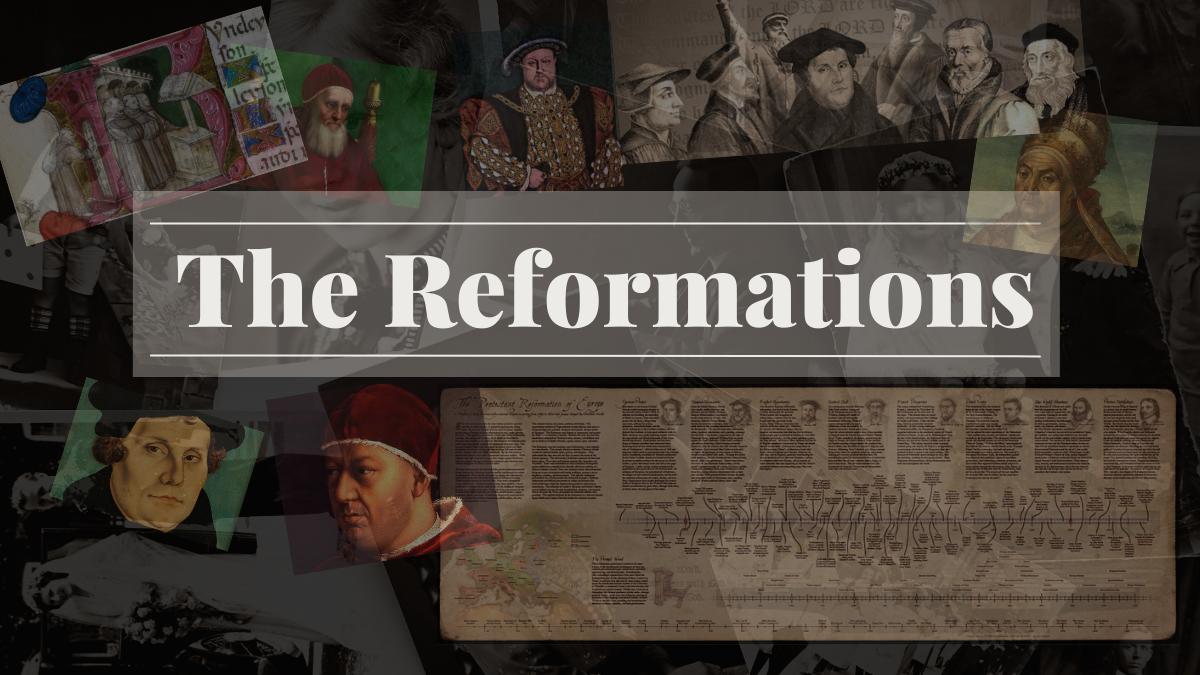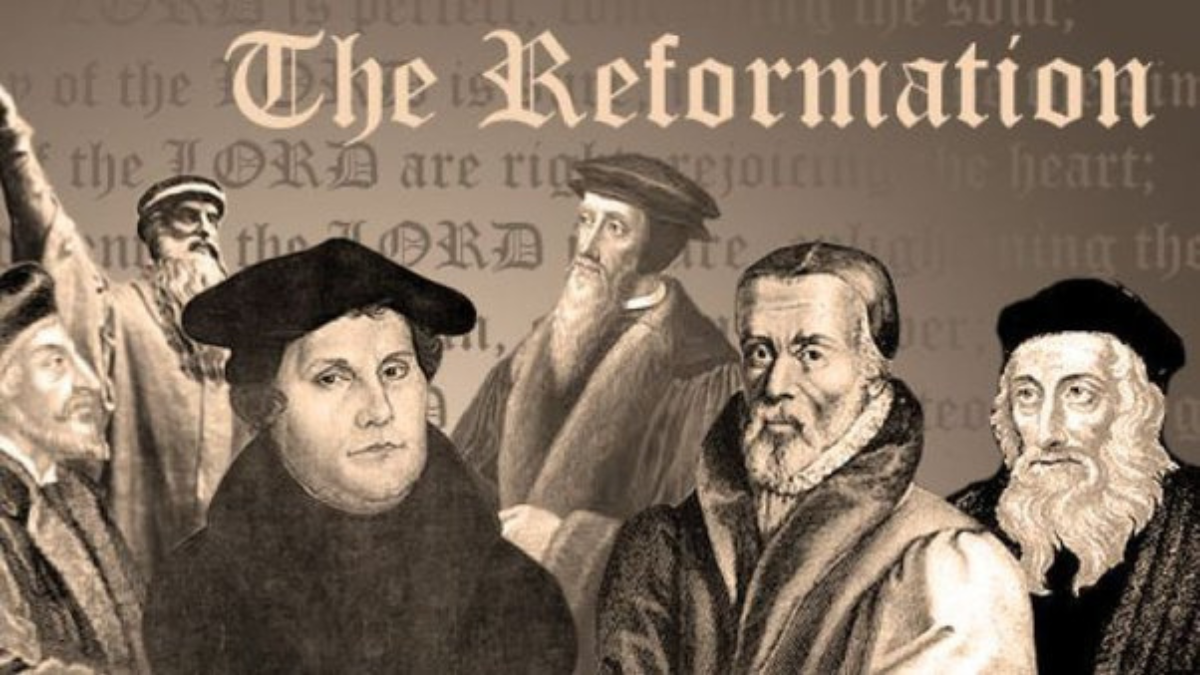The Reformations
Although popularly known as THE Protestant Reformation, in fact there was no single, coherent, or cohesive movement that marked the end of a united Christianity in the West. The reform movement in Germany differed from those in Switzerland, France, England, and the Low Countries.

Introdution to the Reformation: Papal Folly

Well Before Martin Luther
Martin Luther was not the cause of the Reformations that swept across Europe in the 16th century. But he was the spark that lit the tinder that was already smoldering. There were conflicts of church and king, secular politics, the Rennaissance, calls for reform in the church that were bring ignored, and a series of popes that were “asleep at the wheel.”
The introductory presentation is available here.
The German Reformation: theological spark and secular timber

Well Before Martin Luther
The German princes were beginning to assert their political independence from Rome and the Holy Roman Emperor. Germany’s emerging political identity was fueled by its growing wealth in commerce and industry and the rise of its business class, the burghers, who were beginning to pursue their own interests. This new spirit of nationalism was to influence German society and its relationship to the Roman Church. Secular interests were taking precedence over religious matters. Germany’s newfound confidence and independence were to challenge papal and imperial authority and set forces in motion that were to affect European society during the Protestant Reformation. The force of Martin Luther’s personality was certainly a factor. Luther appeared at a decisive moment in history. It was the growing interests of the princes and towns, however, that spurred and sustained this growing movement that would challenge the dominant religious and political authority of the Catholic Church. The Reformation was in part a secular movement and the rise of nationalism and economic rivalries led to its success. The growth of commerce and materialism in Germany, the emergence of German nationalism, and the German princes all played a decisive role in aiding the Reformation.
The presentation is available here.
The Swiss Reformation: reforming the Reformers

A Very Different Reform
The Reformation in Switzerland quickly followed the events in Germany, but the “initial conditions” in terms of secular life, political milieu, church configuration and entanglements with Rome and the Holy Roman Emperor were very different. As a result the Swiss Reform was uniquely Swiss. Learn more about the role of Zwingli in Zurich and Calvin in Geneva – and their part in reforming the reforms of Luther.
The presentation is available here.
The 2nd Wave: England, France and the Low Countries

The Cauldron of Politics, Tradition and Reforming Religion
The Reformations in Germany and Switzerland had produced three reform movement: Lutheranism, Calvinism, and the Anabaptists. In the period of 1524- 1560 these Reforms will move to three locations:
- England where the Concordat of London was the norm for 400 years
- France where the Gallicanism and Conciliarism had found root
- The Low Countries where entanglements with the Holy Roman Empire were far more than just religious
All the above simmered in the cauldron of politics before boiling over into open warfare. … and there is Henry VIII and his wives!
The presentation is available here.
More Reform and Catholic Counter Reform

3rd Wave Reform and an Introduction to Trent
The Reformation in England and the changing landscapes of English kings and queens gave a path for strict Calvanism to establish itself as the Church in Scotland (The Kirk) which was highly influential in first generation Christianity in the New Word.
Beyond the cauldron of power, prestige and politics – there were theological issues. As a prelude the Council of Trent, the week’s presentation outlines the foundations of the competing theologies and understandings among Catholicism, Lutheranism, Calvanism, and the Anabaptists.
The detailed presentation is available here.
The Council of Trent… and then…

The Council of Trent (con't) and then....
The Council of Trent is underway, but for a number of reasons, it takes almost 20 years to complete all its work with the last session finishing in 1567. In our session last week we outlined Trent’s objectives and covered some key basics on sin, grace and free will – from Augustine through to the Reformers.
This week we focus on Justification sola fide, by faith alone and its implications for Sacraments, the Mass and more.
The detailed presentation is available here.